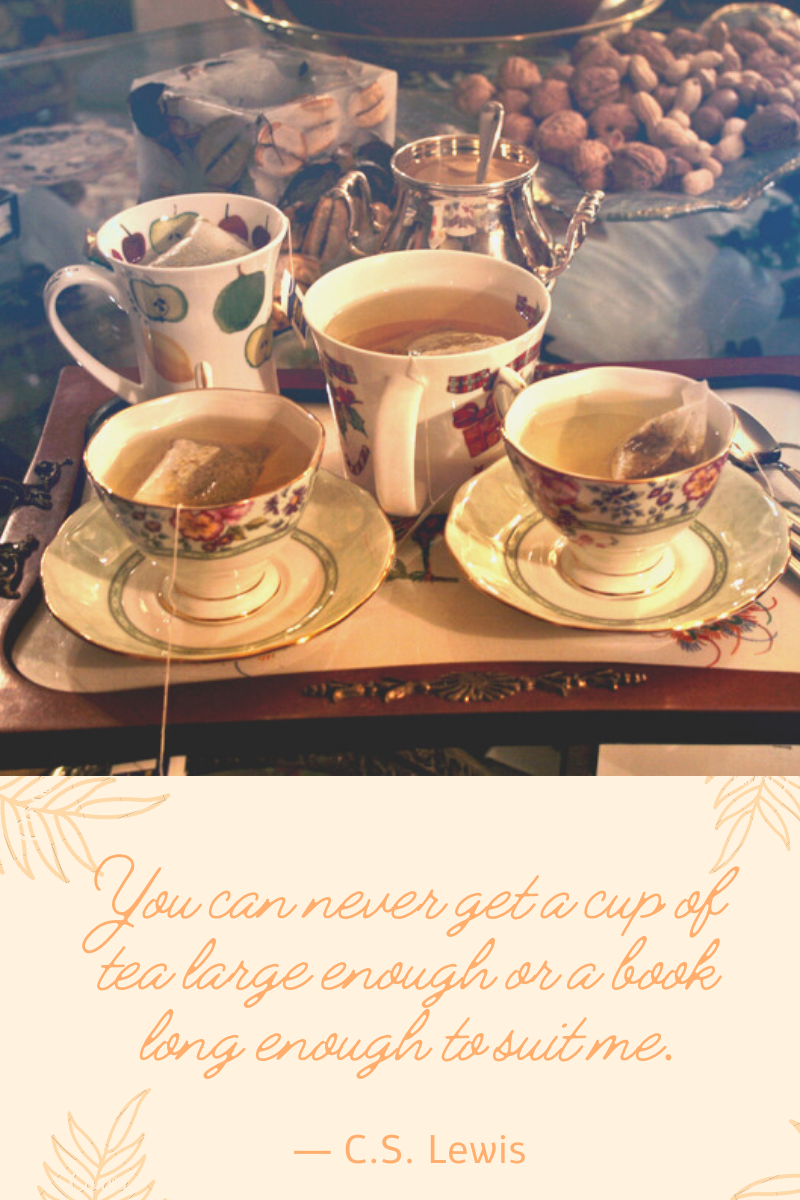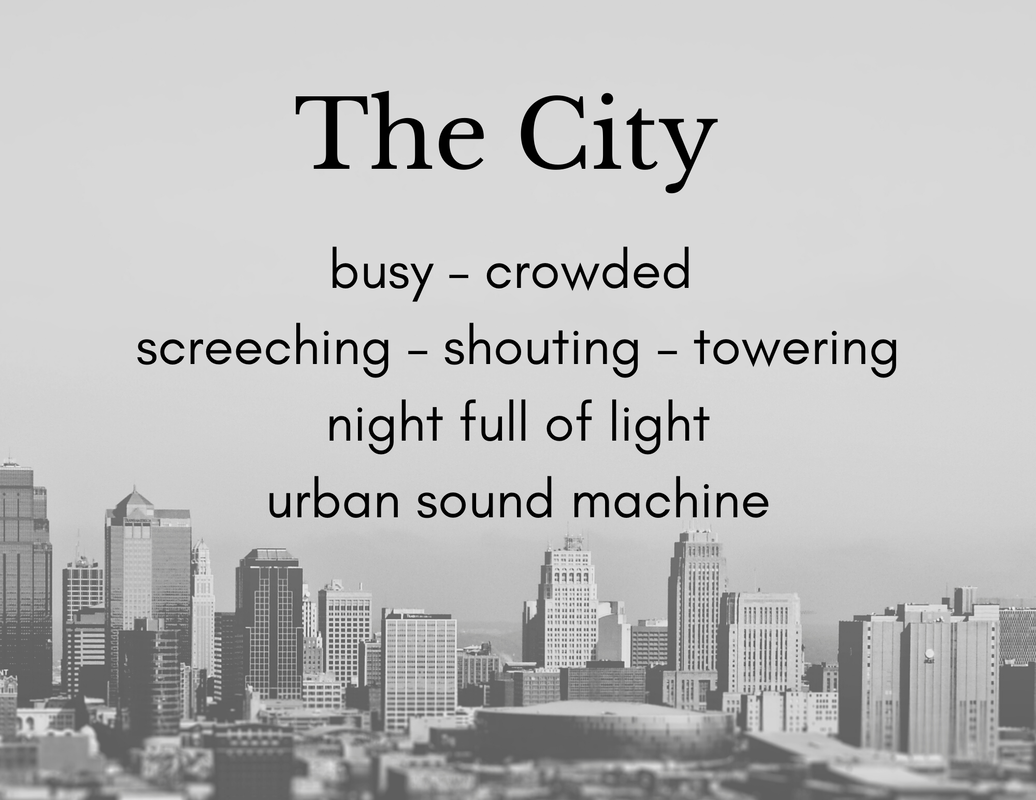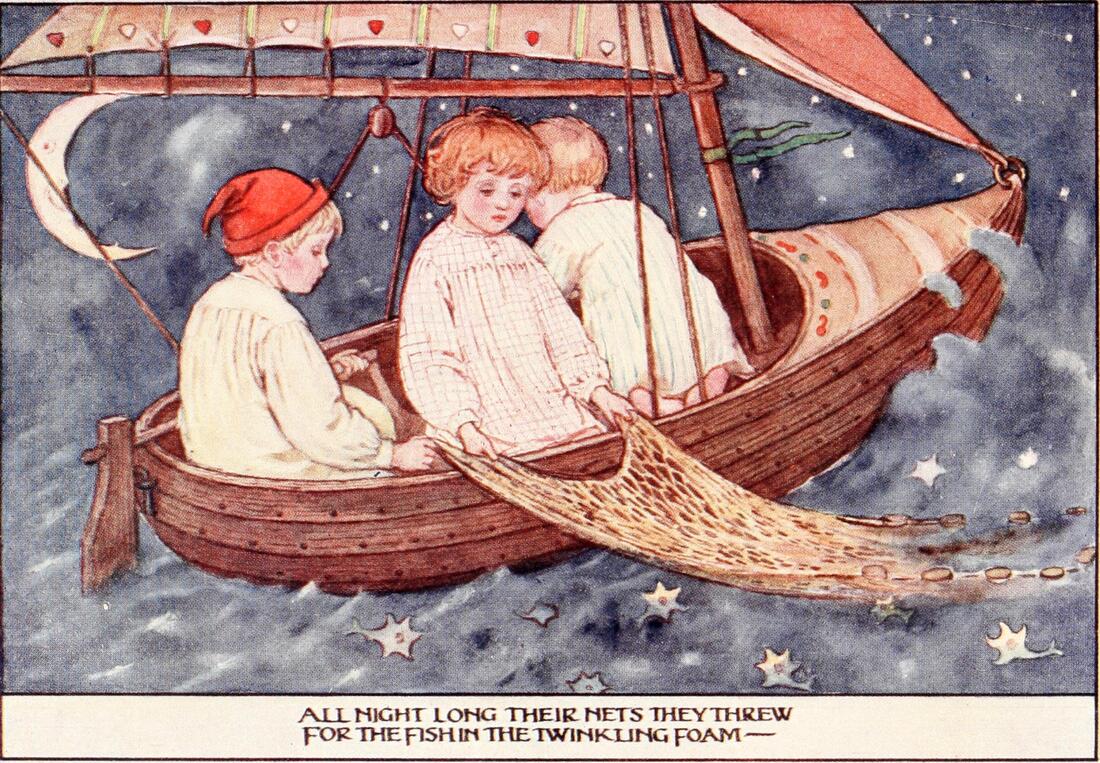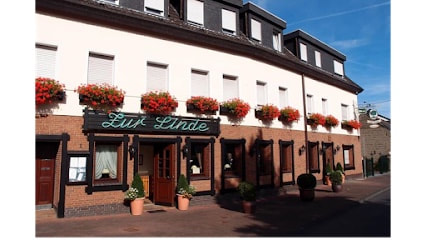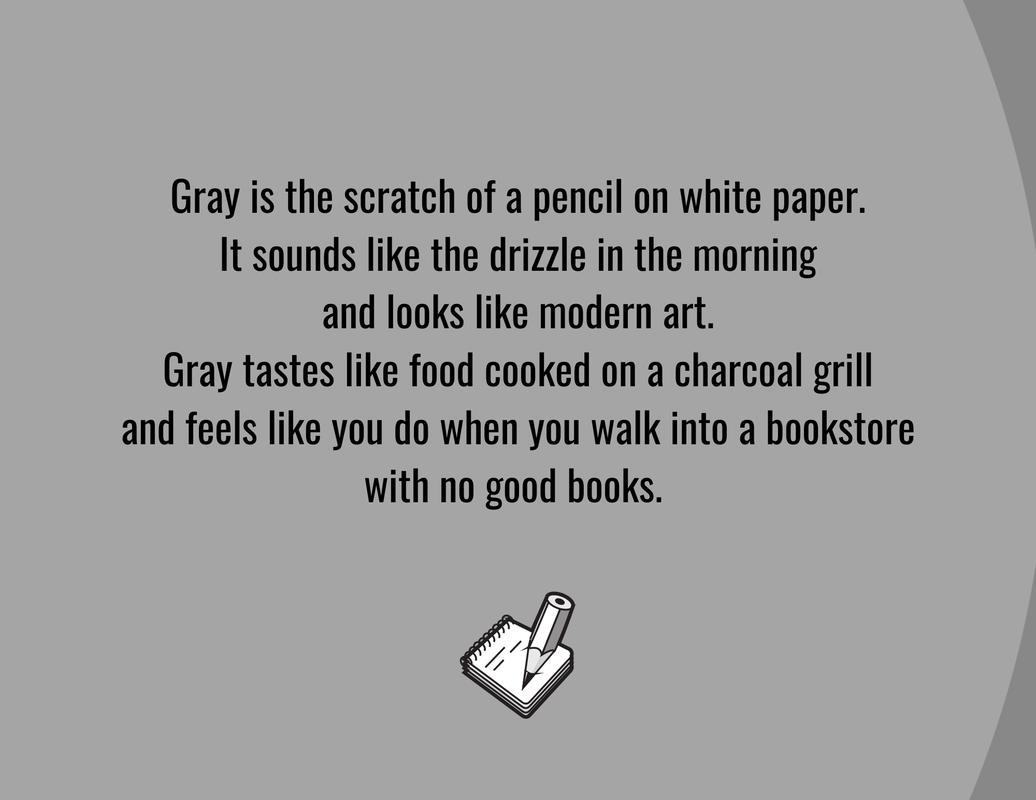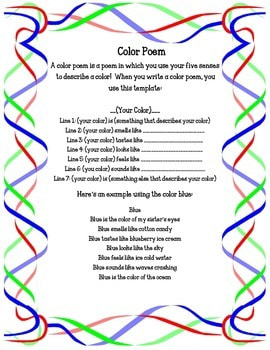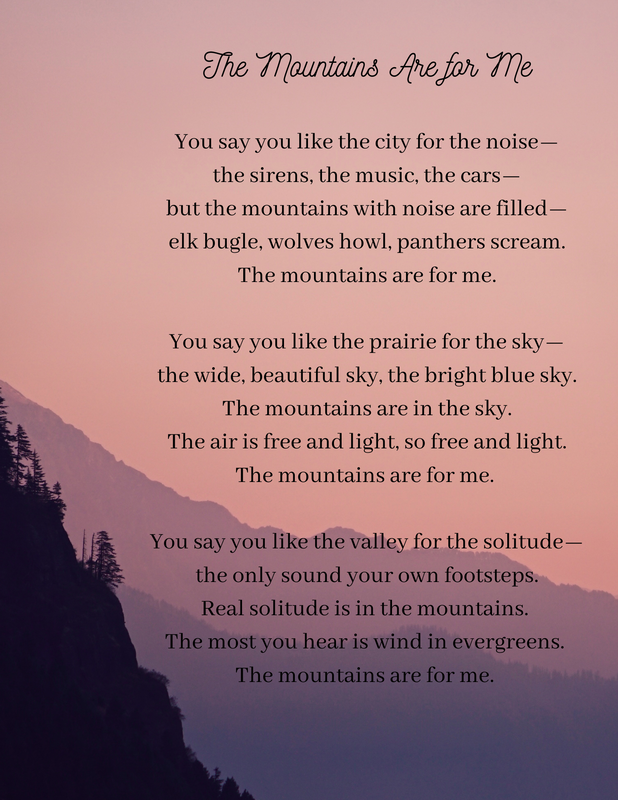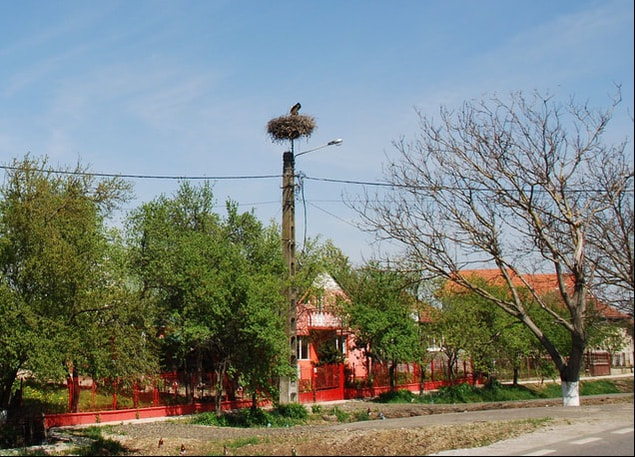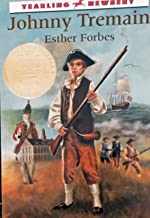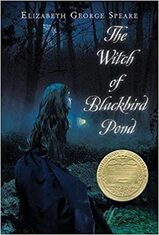|
Though it always comes second to a well made coffee, I do enjoy a good cup of tea with a long book. My favorite is hot black tea with a splash of milk and a spoonful of sugar. Preferably loose-leaf Earl Grey, but English breakfast or some version of chai will do almost as well. While living near Ukraine, I marveled at how their tea aisles rivaled American cereal aisles in length and diversity. We tried a lot of different teas there. Oolong is lovely. Rooibos, mint, red, and white are all good options. The latest type I've sampled is called pu-erh (also pu-'er) tea. I bought mine from Prairie Garden Spices and Teas, which offers a variety of quality teas, spices, and etc. Pu-erh tea brews up light and delicate; I felt like I should drink it from one of those porcelain, handle-less Asian teacups. Almost any tea warms the soul, especially if it comes in a pottery mug, alongside a thick book, and on a rainy day. And now that summer approaches, try your favorite blend over ice. Earl Grey, Moroccan mint, peach white tea... There's more to iced tea than "Liptons in the yellow box," however refreshing and nostalgic that may be. In celebration of all things tea, I'm doing a fun giveaway with Eva from Prairie Garden Tea and Spices. Our lucky winner (US readers only, please) will receive the collection pictured above, which contains samples of three loose-leaf teas: Lazy Daze herbal tea, peach white tea, and Hibiscus Heaven herbal tea. The winner will be able to brew a cup immediately, thanks to the handy tea strainer that fits over a mug and comes with its own lid. Enter below for a chance to win this lovely sampler packet, valued at $25. Spread the word! Tell your friends! The giveaway will stay open through Monday.
18 Comments
The word cinquain comes from the Latin word for five. A cinquain must have five lines, but it can have many different variations, each with its own specific pattern. The pattern I chose for my creative writing class looks like this: TOPIC/TITLE ADJECTIVE – ADJECTIVE ING VERB – ING VERB – ING VERB FOUR WORD PHRASE SYNONYM OF TOPIC My current class hasn't done this exercise yet, but here are some of the cinquains my students wrote last year: Try writing your own cinquains (or teaching your class about them) with this free, printable worksheet similar to what I used. (Send me your cinquains if you like. I'm a greedy poetry monster.)
I could say plenty of negative things about 2020, but there is one thing I've greatly enjoyed about this strange year: watching people embrace new activities. My local greenhouse sold out of herbs and vegetables earlier and faster than ever before, For a few weeks, every nearby grocery store was out of yeast and bread flour, and even our local bulk food store sold out of random baking items and canning lids. When checking out books from my online library, I had to place more holds than usual, because so many more people are reading. I heard that Bob Ross's painting tutorials are getting a lot more viewers, and art and craft supplies fly off the shelves. This summer I noticed more people hanging out on their porches or playing catch in their yards, and the people on the walking track at the park tripled. Yeah, I was grumpy that I couldn't get what I needed for my normal, non-Covid-related gardening and baking and reading. I suspect that a lot of the bread flopped and most of the herbs died. Nevertheless, I love that people are trying new things and finding new hobbies to fill their empty hours. I've done the same. Tried new recipes, did some drawing and painting, completed a free online poetry course, took more walks with my sister and nieces, and studied the enneagram. Just because 2020 is over doesn't mean we need to go back to the rat race. My brother-in-law shared an article that sums up my hopes for the next year. Let Each Task Fill up Your World... Every December my mom got out the Christmas box. Among all the goodies - the white porcelain music box that played "Silent Night," the red candle with my birthdate on it, the homemade knickknacks we kids made in school - was a stack of holiday books. Each year, as my reading level advanced, I fell in love with a new Christmas story. Those stories still speak to me now, and it's hard to know if they're really good, or if it's just the nostalgia.
My favorite, read-every-year holiday story is "The Gift of the Magi," a short story by O. Henry. I used to love "Jello Christmas." It's not quite as compelling as I remembered it, but the message is still a good one. On That Night, a beautiful novella by Elizabeth Yates, centers around the quote at the beginning: "Among the many legends surrounding Christmas Eve, there is one that states that on that night, lost things are found again." I often read A Christmas Carol by Charles Dickens, an oldie but goodie that teaches a lesson, paints a picture of England circa 1840, and offers a plethora of quotable lines. "The Gold and Ivory Tablecloth" is a classical Readers Digest short story by Rev. Howard C Schade. The Best Christmas Pageant Ever is a humorous Christmas read for kids and adults alike. I read it to my students this year, laughed so hard I had to quit reading, and then almost cried at the end. The Blue Carbuncle, a Sherlock Holmes story by Sir Arthur Conan Doyle, is set in the days surrounding Christmas. Then there are the books with holiday chapters or scenes: The opening of Little Women by Louisa Mae Alcott, with the sisters grouped around the crackling fire. The Christmas chapters in The Long Winter by Laura Ingalls Wilder. Who can forget Anne's happiness with the beautiful Christmas dress from Matthew in Anne of Green Gables? Better still are the chapters in Anne of Windy Poplars when Anne takes bitter, unhappy Katherine home for a Green Gables Christmas. This is only the tip of the iceberg. Which holiday books or stories did I miss and which are your favorites? I've been vaguely familiar with Eugene Field's poetry all my life, but only recently did I realize he was a Missourian. Born in St. Louis in 1850, Field attended several colleges across the country, spent six months traveling in Europe, and then moved to Missouri to marry Julia Comstock and write for the St. Joseph Gazette. Most of us remember him for his lighthearted children's poetry like "Little Boy Blue" and "Wynken, Blynken, and Nod." In St. Joseph, however, Field is most famous for another poem, a poem he wrote for an adult audience while far away in England. Lovers' Lane, St. JoSaint Jo, Buchanan County, Is leagues and leagues away; And I sit in the gloom of this rented room, And pine to be there to-day. Yes, with London fog around me And the bustling to and fro, I am fretting to be across the sea In Lover’s Lane, Saint Jo. I would have a brown-eyed maiden Go driving once again; And I’d sing the song, as we snailed along, That I sung to that maiden then: I purposely say, “as we snailed along,” For a proper horse goes slow In those leafy aisles, where Cupid smiles, In Lover’s Lane, Saint Jo. From her boudoir in the alders Would peep a lynx-eyed thrush, And we’d hear her say, in a furtive way, To the noisy cricket, “Hush!” To think that the curious creature Should crane her neck to know The various things one says and sings In Lover’s Lane, Saint Jo. But the maples they should shield us From the gossips of the place; Nor should the sun, except by pun, Profane the maiden’s face; And the girl should do the driving, For a fellow can’t, you know, Unless he’s neglectful of what’s quite respectful In Lover’s Lane, Saint Jo. Ah! sweet the hours of springtime, When the heart inclines to woo, And it’s deemed all right for the callow wight To do what he wants to do; But cruel the age of winter, When the way of the world says no To the hoary men who would woo again In Lover’s Lane, Saint Jo! In the Union Bank of London Are forty pounds or more, Which I’m like to spend, ere the month shall end, In an antiquarian store; But I’d give it all, and gladly, If for an hour or so I could feel the grace of a distant place,-- Of Lover’s Lane, Saint Jo. Let us sit awhile, beloved, And dream of the good old days,-- Of the kindly shade which the maples made Round the stanch but squeaky chaise; With your head upon my shoulder, And my arm about you so, Though exiles, we shall seem to be In Lover’s Lane, Saint Jo. Lovers' Lane, St. Jo is now a busy street lined with modern houses, but the quaint way it winds through the beautiful old trees gives a glimpse of how must've looked when Fields courted his Julia via a "proper horse" and chaise. Eugene Field's St Joseph has changed a lot, and his poetry might seem unfashionable now, but the town has not forgotten him. Partway down the Lane stands a memorial to St. Jospeh's favorite poet. Three city streets are named after Field, as well as a school and an apartment building, and a Little Boy Blue statue keeps endless watch in front of the local library.
When Lee and I first travelled to Germany in 2011, I wasn't expecting one of the highlights to be German cuisine. What a pleasant surprise, then, to find myself proved wrong at our first traditional meal at the Zur Linde Gasthous in Swisttal. Over the next days, and during later trips, we tucked into peppery beef in savory gravies, tender pork schnitzels, deliciously greasy fried potatoes, and—our favorite—buttery spätzle noodles. All enhanced by the ever-present, sour red cabbage side dish. As Mennonites, we're used to many German foods, and even the new dishes we tried seemed vaguely familiar. Nevertheless, when we returned home I was delighted to discover a German deli/cafe in nearby St. Joseph, Missouri. I read about The Cabbage Roll in the newspaper and later tracked it down with my sister. It's a gem, hidden on a side street of St. Joseph, run by amiable people of German heritage. The other day I met two friends there for lunch. Like one said, the place won't win any awards for presentation (German food, like traditional Mennonite food, tends to be all of one color and free of frills or garnish) but they should definitely win awards for their cake. I'm getting ahead of myself. First we ate cabbage rolls, pierogies, sausage, fried potatoes, hot German potato salad, and what the owner/waiter called your red: bowls of hot purple cabbage, well soured. All of it was tasty, especially the potato-stuffed pierogies and vinegary potato salad. And now for the cake. We watched sadly as the last slice of raspberry coconut cake landed on an adjacent table, but there was no need to mourn. We shared three slices of cake, rating them on a scale of 1-5. (German Chocolate: 4, Black Forest: 5, and Mandarin Pecan: 5.5, in case anyone's curious.) That cake! Words fail. Let's just say that I shall return to The Cabbage Roll. (In case anyone's wondering.) Every Tuesday my class does creative writing, and I like to experiment with different forms of poetry. A few weeks ago we wrote color poems. Choose a color, any color. (We used the names on our crayons to help our selection.) Think about your five senses: how does this color look, smell, taste, sound? How does the color make you feel? Arrange your sense details into poem form. My students seemed to enjoy the assignment and their poems turned out wonderfully. I typed and printed them, everyone chose background paper to match their color, and we hung them on the lunchroom walls (otherwise knows as the Hall of Fame.) Here are a few of my student's poems: Here is a free, downloadable worksheet with a process similar to the way we created our poems. I gave the kids freedom to arrange lines as they pleased, and one student even chose to include a set of rhyming lines. Now, color away. The world could use some poetry and whimsy about now.
Last winter I read about a poetry contest for kids, sponsored by the Poetry Society of Virginia. I suggested my students try for it, but only two kids submitted in time. In March, the president of the society contacted me with the news that one of my students had won honorable mention in his age category for his poem titled "The Mountains Are for Me." They said they had a lot of poems in that particular category, but "The Mountains Are for Me" topped the majority. How exciting is that! The win kind of got lost in the whole covid/homeschool mess, unfortunately, but last week a large manila envelope arrived in our school mailbox. I opened it to find a certificate for honorable mention in the contest. I hadn’t realized there’d be an official certificate, so I was excited to send it home to my now former student. This is our school's first brush with literary fame, but maybe it's not the last. I've had the privilege of teaching some amazing writers who I believe will go on to do great things. I'll be the hoarse-from-cheering person on the sidelines, the one with sore-from-clapping hands. Without further ado, here is the winning poem, used with the author's permission: Sigh. I'm a loyal prairie girl but he almost convinces me. I especially like the strong verb choices in the first stanza and the use of repetition. (I'm a sucker for random, well used repetition. "Stopping by Woods on a Snowy Evening" anyone?) Another thing I love is how the prairie has a big sky, but the mountains own the sky. (Again, I'm a prairie girl, but I still appreciate the argument.) Any kids reading this post? Try your hand at poetry. Send it to me, if you like. I'll be posting some poem worksheets over the next months, things I use in my classroom. Submit your poems to contests, write in your super-secret notebook, share a poem with friends... writing isn't a gift unless you use it. :) On another topic, the October issue of Cricket is now available free online, for those of you who've asked where you can read "Stork Time" in its entirety. (Scroll down to page 24 for my story.)
My short story titled "Stork Time" was published in the latest issue of Cricket Magazine.
"Stork Time" is about Costi, a boy living in an underprivileged village in the eastern Romanian judet (county) of Vaslui. Costi's brother Pavel is overdue home from Germany, where he went to do seasonal farm labor. Costi misses him a lot. Surely, surely, Pavel will come home before the storks leave the village for their autumn migration trip to Egypt. I loved working with the editor to get the Romanian facts and illustrations right. You can see a short preview here, along with an illustration. The entire story is found in the October issue of Cricket. For me, the best part of the school day is right after noon recess, when I get to read aloud to my students for 20-30 minutes. Not only do I get to reconnect with my favorite childhood books, I also get to share those books with kids who've never read them. The fact that I've been able to introduce dozens of students to Mrs. Frisby, Maniac Magee, and Johnny Tremain is a privilege I don't take lightly. Here are two favorite books from my favorite era in United States history: Johnny Tremain...my current read-aloud and a long-time fave. An imperfect and oh-so-sympathetic hero, secondary characters who actually existed (Hello, Paul Revere!), and a wonderful setting in pre-Revolutionary Boston. The Witch of Blackbird Pond isn't just a favorite kids' book; it's one of my favorite books, period. The two main characters charm you right off, and the book gives such a picture of how suspicion and gossip can ruin people's lives. (I often edit this book as I go, because there are quite a few prim colonial courting scenes and I don't want to lose the interest of 6th grade boys and such. I do tell the 8th grade girls they can borrow the book later and read all the skipped parts!) Happy Reading!
|
Archives
April 2021
Categories
All
|
